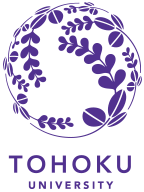Pathogens and Social Infrastructure
Backgrounds
Water pollution with pathogenic viruses, mainly non-enveloped enteric viruses, is one of the growing concerns all over the world, because these pathogenic viruses in reservoir, river water and seawater pose infectious disease risks via drinking water, recreation water and marine cultured products. Since a large amount of excreted pathogenic viruses from infected individuals flow into sewage streams, removal and inactivation of these viruses in wastewater treatment processes is really important to prevent water environment from the viral pollution. A variety of disinfection processes, including chlorine related oxidants, ultraviolet (UV) irradiation, ozonation and photocatalysis, have been proposed for inactivating pathogenic viruses in water, and mechanisms of viral inactivation with several disinfection processes have been suggested. However, the presence of non-cultivatable viruses, which has no cell culture and animal model available for assaying their infectivity, makes the situation complicated, because it is impossible to comprehend the effects of these disinfection processes on non-cultivatable viruses by the loss of their infectivity. The information of disinfection effectiveness on these non-cultivatable viruses is invaluable and indispensable to control these viruses under human administration. One important approach to address this issue is to establish cell lines that can replicate currently non-cultivatable viruses, but the difficulty of this approach has been described. One of the other important viewpoints in the environmental virology is that waterborne pathogenic viruses that could newly emerge in the near future are presumably non-cultivatable, because they have not been ever trapped and found notwithstanding the intensive monitoring by a lot of researchers using a variety of cell culture for a long time. The establishment of cell lines that can propagate non-cultivatable viruses has been very critical and indispensable for the study of pathogenicity and life cycles of pathogenic viruses, but it is not possible for environmental sanitarians to wait it to address the recent need for the evaluation of the safety in the usage of water and marine products.
Research Objectives
In our study group, a new approach to evaluate the viral particle integrity has been proposed, in which cumulative oxidative damages on viral capsid protein are directly detected. Non-enveloped enteric viruses could be injured by exogenous stresses, and the lesions on viral capsid protein would lead to the inability for viruses to recognize cellular receptors to initiate infection. This means that the integrity of viral capsid protein is very critical for estabilishing a viral life cycle. In the proposed approach, cumulative oxidative damages on viral particle are detected by labeling with a biotin hydrazide that can form covalent bond with carbonyl groups (Figure indicated below). Residues of several amino acids, including lysine, arginine, tyrosine and prorine can be oxidized by several chemicals, and carbonyl groups are formed on these residues. It is well known that the carbonylation on protein molecules caused by oxidative stresses bring about the loss of protein functions. Biotin hydrazide could react with carbonylated capsid protein of viruses, and oxidatively damaged capsid protein could be modified with biotin. Biotin-modified (= damaged) virus particles are separated from intact virions with avidin-immobilized affinity chromatography. In order to confirm the accumulation of the oxidative damages on viral capsid proteins cause the infectivity loss of viruses, astrovirus and rotavirus have been employed as test viruses. Furthermore, this approach of the detection of oxidative damages with biotin hydrazide and avidin column was applied to human norovirus, an important etiological agent, purified from a fecal sample of gastroenteritis patient. We are going to apply this approach to evaluate the infectivity loss of enteric viruses in water environment and water purification processes.
Achievements
Research Articles
- Specific interactions between human norovirus and environmental matrices: Effects on the virus ecology
Mohan Amarasiri and Daisuke Sano
Viruses, March 2019, 11(3). 224. - Specific interactions of rotavirus HAL1166 with Enterobacter cloacae SENG-6 and their contribution on rotavirus HAL1166 removal
Mohan Amarasiri, Hiroki Kawai, Masaaki Kitajima, Satoshi Okabe, Daisuke Sano
Water Science and Technology, January 2019, 79(2), 342-348. - Free chlorine disinfection as a selection pressure on norovirus
Andri Taruna Rachmadi, Masaaki Kitajima, Kozo Watanabe, Sakiko Yaegashi, Joeselle Serrana, Arata Nakamura, Toyoko Nakagomi, Osamu Nakagomi, Kazuhiko Katayama, Satoshi Okabe, Daisuke Sano
Applied and Environmental Microbiology, July 2018, 84(13), e00244-18. - Disinfection as a selection pressure on RNA virus evolution (Viewpoint article)
Andri Taruna Rachmadi, Masaaki Kitajima, Kozo Watanabe, Satoshi Okabe, Daisuke Sano
Environmental Science and Technology, March 2018, 52(5), 2434–2435.
Invited speech
- Water Infrastructure & Virus Evolution
Daisuke Sano
Faculty of Engineering, Singapore National University (Feb. 25, 2019) - Inactivation and removal of viruses: is this a matter of virus evolution? (Keynote Speech)
Daisuke Sano
6th ISFEV Conference
Oct. 7-10, 2018, Arizona State University, Phoenix, USA
Presentations
- Identification of bacterial genes for producing norovirus-binding glycoconjugate
Mohan Amarasiri, Peiyi Yang, Masaaki Kitajima, Yasuhiro Kasahara, Satoshi Okabe, Daisuke Sano
6th ISFEV Conference
Oct. 7-10, 2018, Arizona State University, Phoenix, USA - Contribution of specific interactions between human enteric viruses and wastewater solids on virus removal
Mohan Amarasiri, Masaaki Kitajima, Satoshi Okabe, Daisuke Sano
IWA World Water Congress & Exhibition 2018
Sep. 16-20, 2018, Tokyo Big Sight, Japan - Screening of bacterial genes responsible for producing norovirus-binding glycoconjugate
Mohan Amarasiri, Peiyi Yang, Masaaki Kitajima, Yasuhiro Kasahara, Satoshi Okabe, Daisuke Sano
WET2018
July 14-15, 2018, Ehime University, Japan - A genetic factor of norovirus for resistance to free chlorine disinfection
Andri Taruna Rachmadi, Arata Nakamura, Masaaki Kitajima, Satoshi Okabe, Daisuke Sano
Water and Environment Technology Conference 2017
July 22-23, 2017. Hokkaido University, Sapporo, Japan - Genetic factors of rotavirus determining free chlorine-tolerance
Syunsuke Kadoya, Syunichi Urayama, Takuro Nunoura, Masaaki Kitajima, Satoshi Okabe, Daisuke Sano
Water and Environment Technology Conference 2017
July 22-23, 2017. Hokkaido University, Sapporo, Japan - Histo-blood group antigen (HBGA) positive bacteria in the mixed liquor reduces the human rotavirus concentration in membrane filtration effluent
Mohan Amarasiri, Masaaki Kitajima, Satoshi Okabe, Daisuke Sano
Water and Environment Technology Conference 2017
July 22-23, 2017. Hokkaido University, Sapporo, Japan
